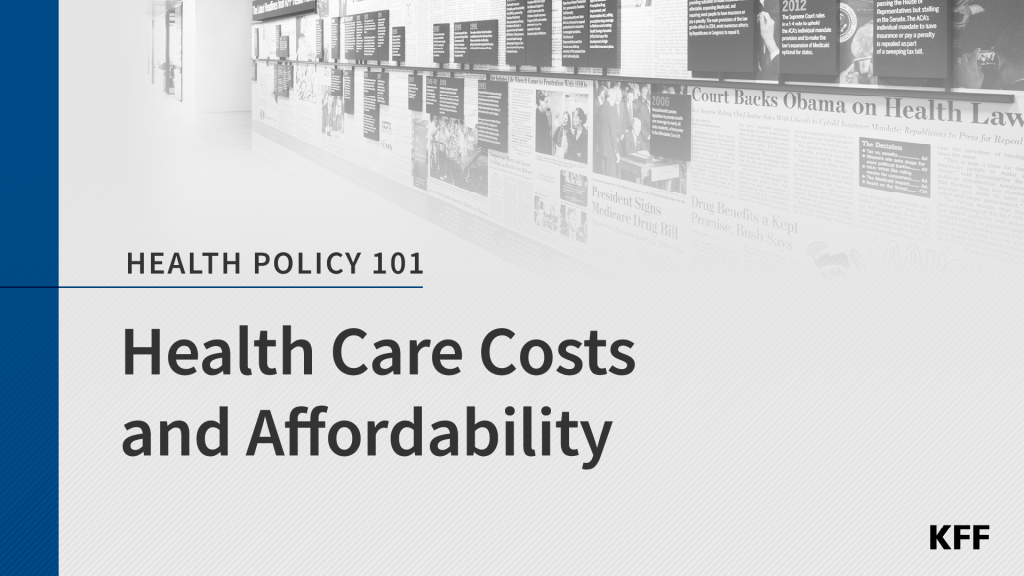Obamacare and You: If You Have a Pre-Existing Condition
This short explainer highlights the changes for people with pre-existing health conditions coming under the Affordable Care Act, also known as Obamacare.
The independent source for health policy research, polling, and news.
KFF’s policy research provides facts and analysis on a wide range of policy issues and public programs.
KFF designs, conducts and analyzes original public opinion and survey research on Americans’ attitudes, knowledge, and experiences with the health care system to help amplify the public’s voice in major national debates.
KFF Health News is a national newsroom that produces in-depth journalism about health issues and is one of the organization’s core operating programs.
Health Policy 101 is a comprehensive guide covering fundamental aspects of U.S. health policy and programs, including Medicare, Medicaid, the Affordable Care Act, employer-sponsored insurance, the uninsured population, health care costs and affordability, women's health issues, and health care politics. The Health Care Costs and Affordability chapter explores trends in health care costs in the U.S. and the factors that contribute to this spending. It also examines how health care spending varies across the population, the impact of costs on care affordability and individuals' overall financial vulnerability.
This short explainer highlights the changes for people with pre-existing health conditions coming under the Affordable Care Act, also known as Obamacare.
The Affordable Care Act, also called Obamacare, creates several new ways to get health coverage. This fact sheet explains how If you are uninsured and not offered health coverage through your job, you may be able to obtain coverage through Medicaid or through a new health insurance marketplace (or exchange) in your state. It is from our Obamacare & You series.
Medicaid now covers more than 1 in every 5 Americans, and millions of uninsured individuals will become newly eligible for Medicaid under the ACA. Considering Medicaid’s large and growing coverage role, an evidence-based assessment of the program’s impact on access to care, health outcomes, and quality of care is of major interest. This brief takes a look at what the research literature shows regarding the difference Medicaid makes.
The Kaiser Health Security Watch uses Kaiser Health Tracking Poll data to measure the public's health care-related problems and worries, including problems paying medical bills, skipping or delaying health care due to cost, and worrying about their future ability to pay for care and keep insurance.
As Congress and other policymakers weigh potentially major changes to the Medicare program as part of the deficit-reduction debate, this Kaiser Family Foundation report highlights the role Medicare now plays in the lives of beneficiaries and the challenges many face in paying for their health care and other living expenses on a fixed budget.
The Alliance for Health Reform and WellPoint, Inc. discuss the role of urgent care centers and retail clinics emerging within the health care system.
Under the Patient Protection and Affordable Care Act (PPACA), insurance plans offered through state insurance exchanges as well as non-grandfathered plans offered in the individual and small group markets - will be required to cover a set of health benefits and services called the "essential health benefits" package.
The ACA's enhanced premium tax credits are set to expire at the end of 2025. This calculator estimates how much out-of-pocket premiums would increase for families if Congress does not extend the credits. The projected premium increases are estimated based on family income, zip code, size, ages, and 2026 ACA Marketplace premiums.
Enhanced premium tax credits expire at the end of this year. Among those with incomes over 400% poverty who are losing the tax credit altogether, the impact will be greatest for those whose unsubsidized premiums are highest: older Marketplace enrollees and those living in higher-premium locales. The maps in this brief show how much average premium payments would increase for 2026 benchmark silver plans with the expiration of enhanced premium tax credits at three income levels above an income cap of 400% of federal poverty for a 40-year-old and 60-year-old individual, namely 401%, 501% and 601%.
This new analysis and chartbook examines out-of-pocket spending among Medicare beneficiaries, including spending on health and long-term care services and insurance premiums, using the most current year of data available from a nationally representative survey of people on Medicare. It explores which types of services account for a relatively large share of out-of-pocket spending, which groups of beneficiaries (including by age, gender, health status, and chronic conditions) are especially hard hit by high out-of-pocket costs, and trends in out-of-pocket spending between 2000 and 2010.
© 2025 KFF
